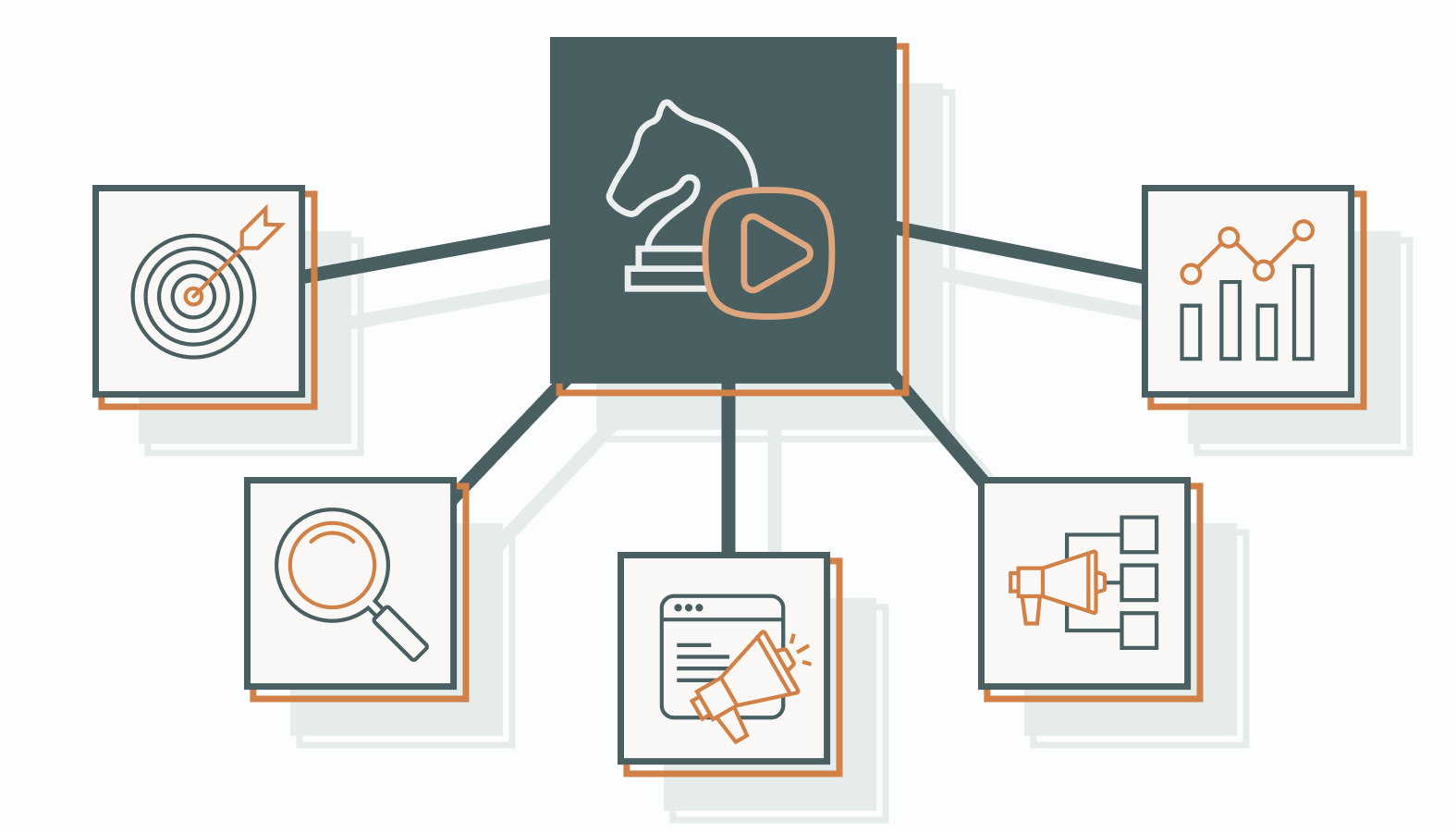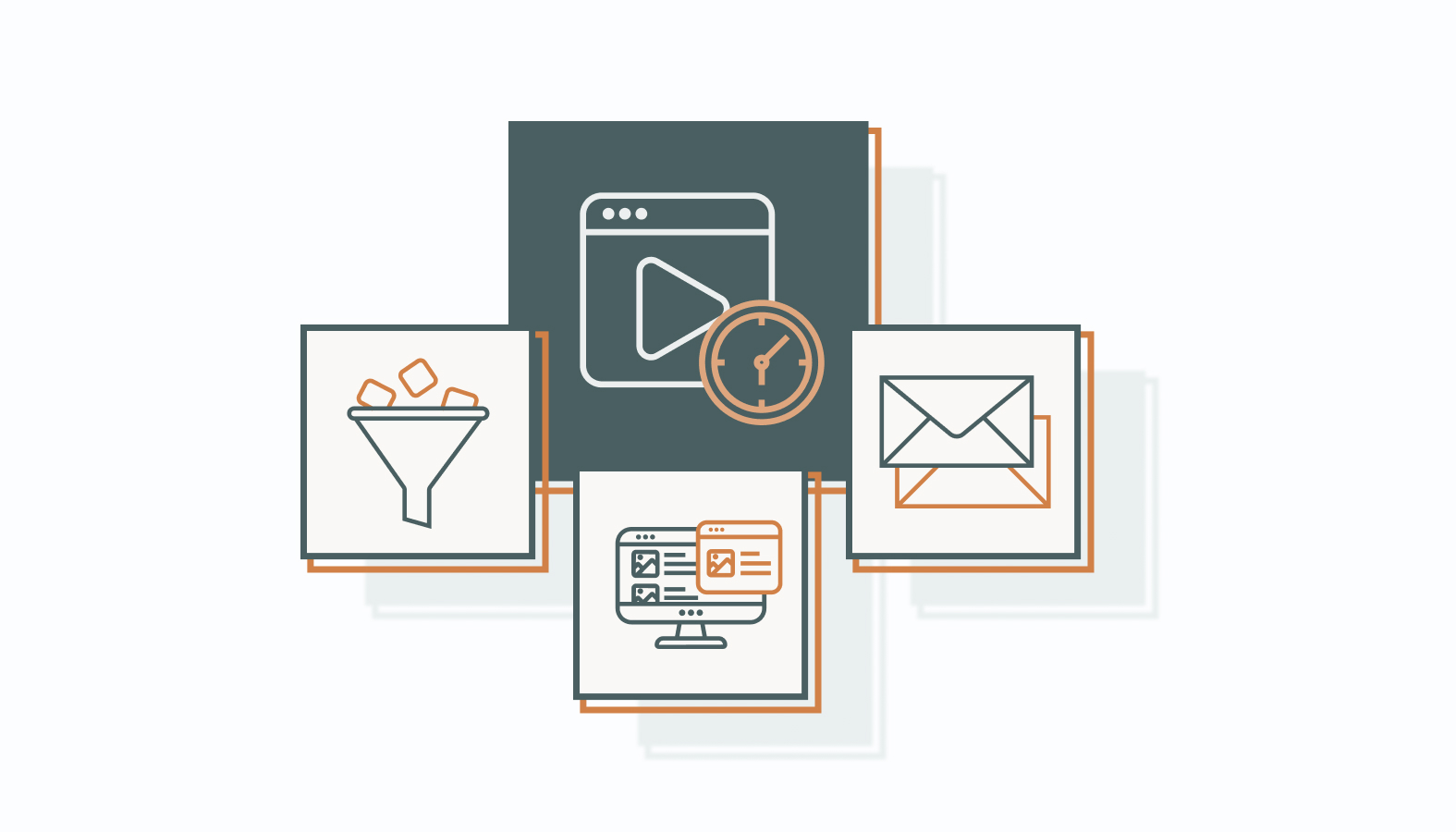Great products don’t sell themselves. Visibility, trust, and conversion are earned — and content is the currency that buys them.
In the ecommerce realm, attention is your most valuable asset. The brands that thrive are those that craft content to captivate the right buyers, keep them engaged, and seamlessly guide them toward a purchase.
However, many teams stumble at execution. Scattered posts, inconsistent messaging, and guesswork don’t scale. You need a strategy that aligns with your goals, resonates with your audience, and leverages the channels that matter.
This guide reveals how to build such a strategy. From planning and production to distribution and optimization, you’ll learn to transform content from a mere checklist item into a powerful growth engine.
Mastering Ecommerce Content Marketing
Content is the fuel that powers the ecommerce engine. If your strategy is all product and no narrative, you’re leaving serious revenue on the table.
A savvy ecommerce content marketing strategy achieves two critical objectives: builds awareness and fosters connection. It helps potential customers understand your brand, trust your offerings, and feel confident enough to buy from you without hesitation. In a crowded market, that distinction is crucial.
Content is the beacon that cuts through the noise, guiding buyers from passive scrolling to active purchase.
Advantages of Ecommerce Content Marketing
A well-executed content marketing strategy does more than make your ecommerce brand look good. It solves real business problems: low visibility, weak engagement, poor rankings, and abandoned carts.
Here’s how content helps fix all four.
1) Increased Brand Visibility
Effective content places your brand in front of the right people at the right time.
Think beyond blog posts. Product tutorials, review videos, and how-to guides can outperform any ad spend.
The goal isn’t to flood channels but to appear where your audience already pays attention. And when your content consistently delivers value, your brand stays top of mind when it’s time to buy.
2) Improved Customer Engagement
If your content feels one-sided, you’re missing the mark.
Engagement isn’t just about clicks or views. It’s about creating a conversation. It’s the reaction to a sharp email subject line, the comments under a how-to reel, or responses to a social-media question. Q&A sessions, webinars, and interactive quizzes can enhance this engagement.
Strong content creates an experience that keeps people involved, not just informed. This interaction builds familiarity and trust, which directly impacts buying behavior.
3) Enhanced SEO Performance
Search engines don’t rank brands — they rank solutions. Your content should answer fundamental questions and align with genuine search intent. This means structuring pages well, integrating long-tail keywords naturally, and writing for people instead of algorithms.
If your content is valuable, frequently updated, and technically sound, search engines will reward you with visibility, leading to increased clicks.
4) Higher Conversion Rates
You’re not writing just to inform. You’re guiding the decision-making process. Well-thought-out content reduces hesitation, addresses objections, and shortens the buying cycle.
Whether it’s a detailed product description, a compelling customer story, or a timely offer, the goal is to transform interest into action.
Conversions become predictable and repeatable when content aligns with the customer’s decision stage.
Building Your Ecommerce Content Strategy
A high-performing ecommerce content strategy is the foundation for consistent growth, sharper marketing decisions, and scalable results. Without it, you’re merely adding to the noise. With it, every piece of content works harder, reaching the right people, moving them closer to conversion, and building equity while you sleep.
Define Clear Goals and Understand Your Audience
Start with clarity. What do you actually want the content to achieve?
More organic traffic? Higher conversion rates? Better retention?
Define your objectives using SMART goals: specific, measurable, achievable, relevant, and time-bound. This gives your team a target and analytics a framework to validate success.
Equally important is knowing your audience. Develop detailed personas that reflect your most valuable customers.
Go beyond basic demographics. Dig into motivations, frustrations, buying behavior, and triggers. This kind of precision transforms vague messaging into laser-focused content that earns attention and trust.
Audit What Exists, Then Analyze the Landscape
Before building anything new, take stock of what you’ve already created:
- What’s ranking?
- What’s converting?
- What’s falling flat?
A content audit uncovers quick wins and highlights weak spots. Pair that with competitor analysis to identify untapped topics, channel gaps, and unmet audience needs.
Market dynamics shift quickly. That’s why ongoing research matters. Monitor your industry, study customer search behaviors, observe competition evolution, and adapt to changing formats. The best ecommerce brands anticipate changes rather than merely react to them.
Develop a Plan That Aligns With the Business
Once you’ve defined your goals and insights, translate them into a tactical content plan. Build a content calendar that ties each asset to a specific objective, audience segment, and distribution channel.
Keep it simple: what are we publishing, when, where, and why?
Format matters, too. Choose the right medium for the message.
- Long-form articles for SEO.
- Short videos for engagement.
- Case studies for trust.
- Social posts for shareability.
Select based on what your audience consumes and what your product demands.
Execute With Precision and Reach
If no one sees your content, it will not have an impact. Strategic distribution is the force multiplier.
Deploy content to channels where your audience already spends time: search engines, social media, email, and influencer ecosystems. Then, tailor the format and timing for each platform to maximize performance.
Execution needs coordination. Schedule content based on buyer journeys and seasonal relevance. Automate where it makes sense, but ensure a human touch for tone and timing. Winning brands publish frequently, but they do it purposefully and consistently.
Measure, Learn, and Optimize Relentlessly
Performance tracking is non-negotiable. Use KPIs like traffic, engagement, conversions, and retention to gauge the real impact of your efforts. But don’t just collect data; act on it, too.
Identify what drives results and double down. Spot underperformers and refine them. Experiment, A/B test, and iterate.
A smart content strategy evolves with your audience, the market, and the business. If you’re not optimizing, you’re leaving ROI on the table.
Content Types and Their Strategic Use
In ecommerce, content does more than fill space. It earns attention, drives conversions, and builds long-term loyalty.
But not all content pulls the same weight. Each format serves a specific function in the customer journey. The key is knowing when to deploy each type to ensure your message lands with impact, not just volume.
Web Content That Converts
Product pages and landing pages are your frontline conversion tools — they’re decision engines.
Start with product descriptions that highlight features and help the customer envision themselves using the product. Show them how it solves a problem or enhances their lives. Skip the fluff and lead with value.
Landing pages require laser focus. Every headline, image, and word should nudge the user toward one explicit action. Whether it’s a purchase, sign-up, or download, make your call-to-action (CTA) bold, visible, and irresistible.
Utilize trust signals, frictionless design, and persuasive language to maintain momentum in one direction: forward.
Blogging for Brand Storytelling
Blogs are your brand’s narrative engine. They must educate, inspire, and build authority, one post at a time. However, a good blog should also frame your brand as the helpful expert your audience wants to engage with.
Start with what your customers actually care about, topics that matter to them. Address their challenges, offer clear takeaways, and give them a reason to return. Write conversationally, as if talking to a savvy friend. Use subheads, visuals, and clean formatting to make insights digestible at a glance.
Consistency is key. A steady stream of valuable content reinforces your presence, builds SEO equity, and keeps your audience engaged even when they’re not in buying mode.
Email Marketing for Relationship Building and Retention
Email is your direct line to the customer and remains one of the highest-performing channels in ecommerce. While other content attracts, email deepens the connection. It keeps your brand top-of-mind and retains buyers within your orbit.
Effective email marketing blends timing, relevance, and tone:
- Welcome sequences set the stage.
- Cart reminders recover lost revenue.
- Post-purchase follow-ups turn one-time buyers into loyalists.
- And loyalty emails reward the ones who keep showing up.
Use segmentation to speak to real behavior, not just assumed interest. Deliver value first — whether a tip, an offer, or something exclusive.
And write like a person, not a press release. The best emails feel like they were written for one person, even if they’re sent to thousands.
A smart email strategy boosts retention, builds trust, drives repeat purchases, and turns casual customers into brand advocates.
Effective Content Distribution and Promotion
Creating high-performing content is step one. But if no one sees it, it doesn’t matter. Distribution and promotion turn good content into measurable impact. When done right, they place your brand in front of the right people, at the right time, with the right message, and that’s where conversion happens.
Leveraging Social Media Platforms
You don’t need to be everywhere. You need to be where your audience pays attention.
- Start with platform-specific insights. Instagram and TikTok dominate younger demographics with visual-first experiences, while LinkedIn skews professional, ideal for B2B or high-consideration categories.
- Once you know where your audience is, customize your approach.
- Instagram rewards strong visuals and concise messaging.
- TikTok thrives on fast-moving storytelling and authenticity.
- LinkedIn favors smart insights and conversation starters.
Don’t copy-paste across platforms. Craft content that fits the rhythm and expectations of each channel.
And don’t just post. Engage, respond to comments, use interactive features, and, most importantly, spark dialogue. The more native your content feels, the better your organic reach and performance.
Building Influencer Partnerships That Actually Influence
Influencer marketing works when executed with precision.
- Start by identifying creators whose audience, tone, and values match your brand. High follower counts mean nothing if trust and engagement aren’t there. Prioritize creators who consistently engage and spark honest conversations.
- Structure partnerships with mutual value in mind. Give influencers creative freedom but anchor the relationship with clear deliverables and messaging. The best outcomes come when you let them tell your story in their voice, not yours.
- Maintain open communication. Check-in on performance, share feedback, and iterate together.
Strong partnerships don’t just sell a product. They build long-term equity with audiences that trust the messenger as much as the message.
Measuring Success and Making Data-Driven Adjustments
If you’re not tracking performance, you’re guessing. And guessing doesn’t scale.
Content success starts with the right metrics (traffic, conversions, engagement, retention) and ends with strategic refinement.
Evaluating Content Effectiveness
Use tools like Google Analytics, your CRM, and native platform dashboards to gather hard data.
Watch for patterns: which formats earn clicks, which headlines drive shares, which offers to convert. Numbers tell part of the story. Audience feedback fills in the gaps. Look at comments, reviews, and survey responses for insight into what resonates and doesn’t.
Success doesn’t mean perfection. It means iteration. Treat every campaign as a learning opportunity. Use performance data to tweak messaging, timing, and targeting. Improve by design, not by chance.
Staying Ahead Through Market Adaptation
Ecommerce moves fast. One day, your audience is on Instagram; the next, they’re following trends on Threads. Staying relevant means keeping your radar sharp.
- Prioritize tracking industry shifts, consumer behavior, and emerging platforms.
- Stay close to the ground. Read industry reports.
- Watch competitors.
- Join communities where your customers hang out.
Adaptation doesn’t mean chasing every trend. It means spotting the right ones early and testing with intent.
When a platform or format aligns with your strategy, lean in. Experiment with short-form video, long-form storytelling, or interactive tools. Test, measure, refine, and repeat.
Brands that adapt with purpose outperform those stuck in rinse-and-repeat mode. Agility isn’t a bonus in ecommerce; it’s a survival skill.
Real-World Inspiration: Case Studies of Successful Ecommerce Content Strategies
Great content strategy isn’t theoretical. The most valuable lessons come from watching how the best brands execute at scale, under scrutiny, and with tangible business outcomes on the line.
These brands don’t just create content; they architect experiences, drive conversation, and build long-term loyalty. Let’s break down what makes their strategies effective and what you can borrow to sharpen your own approach.
Nike: Turning Storytelling Into a Competitive Advantage
Nike’s marketing engine runs on one key principle: emotion wins. Rather than pitching shoes, Nike sells ambition, drive, and identity through some of modern history’s most recognizable content campaigns.
Campaigns like Just Do It and Dream Crazier are more than taglines. They are rallying cries for anyone striving toward something bigger. Nike blends high-impact visuals with real stories of perseverance, spotlighting athletes who overcome the odds and transforming personal struggles into brand equity.
Take Dream Crazy, featuring Colin Kaepernick. It went beyond sports. It sparked debate, took a stand, and polarized some audiences while galvanizing others. The result? Record engagement, massive earned media, and a surge in brand loyalty among Nike’s core buyers. That’s not accidental. That’s brand alignment done with conviction.
The takeaway: When your values and your audience align, you don’t just market. You lead.
Sephora: Educating to Build Authority and Loyalty
Sure, Sephora is in business to sell cosmetics. But it also educates, engages, and builds a beauty ecosystem that turns buyers into lifelong brand advocates.
Its Virtual Artist app lets customers try on products digitally, bringing convenience and personalization into the purchase journey. This tool isn’t a gimmick; it reduces decision friction and increases confidence in buying. Smart move.
However, Sephora’s real power play is its Beauty Insider Community, a platform for product discussion, peer recommendations, and expert advice — all owned, branded, and facilitated by Sephora.
By focusing on education and peer-to-peer engagement, Sephora positions itself as more than a retailer. It becomes the trusted authority in beauty, earning loyalty not through discounts, but through relevance and expertise.
The strategy here is clear: you build trust when you help customers learn. And trust converts.
Amazon: Scaling Personalization With Precision
Amazon’s strength isn’t flashy content but relevance at scale. Everything they send, show, or suggest feels like it was made for you — and that’s not an accident.
Amazon uses behavioral data to tailor content, from homepage carousels to follow-up emails. Dynamic emails featuring personalized product suggestions based on past behavior have helped drive repeat purchases with uncanny accuracy.
This kind of personalization could’ve easily become chaotic, but Amazon invested heavily in machine learning and recommendation algorithms to manage it. Their system evolves constantly, learning from every click, scroll, and purchase.
What’s most impressive? This isn’t personalization for vanity’s sake. It’s tied directly to revenue. Every recommendation is a calculated move to shorten the path to purchase.
The insight here: personalization doesn’t have to be flashy. It has to be helpful, timely, and built around the customer’s real behavior.
Reflecting on Strategy: Key Insights for Future Growth
When your ecommerce content strategy is fully aligned (from content creation and distribution to measurement and refinement), you don’t just get clicks. You build trust, drive conversions, and create lasting momentum.
Here’s the core framework to keep your strategy focused and effective:
- Content that connects: Create with intent. Whether it’s inspiration, education, or personalization, the best content serves a real purpose for your audience.
- Distribution that works: Great content flops without reach. Use the right platforms, formats, and timing to meet buyers where they already are.
- Optimization that scales: Track what moves the needle. Improve what doesn’t. Every iteration should bring you closer to stronger performance and better ROI.
- Lessons from the leaders: Brands like Nike, Sephora, and Amazon prove that strategy, not budget, builds results. Their playbooks are public; use them.
You don’t need to reinvent the wheel, but you do need a strategy built to scale. Start with clarity, move purposefully, and stay relentlessly aligned with your customer’s needs.
Ready to Build a Stronger Content Strategy?
You’ve got the insights. Now it’s time to make them work for your business.
If you’re looking to sharpen your strategy, map content to your buyer journey, or just want an expert perspective on where to go next, we’re here to help. No pressure. No fluff. Just clear, actionable advice from people who’ve done this before.
Schedule a candid conversation with one of our experts. Let’s discuss your goals, challenges, and opportunities and determine what’s actually worth doing next.









